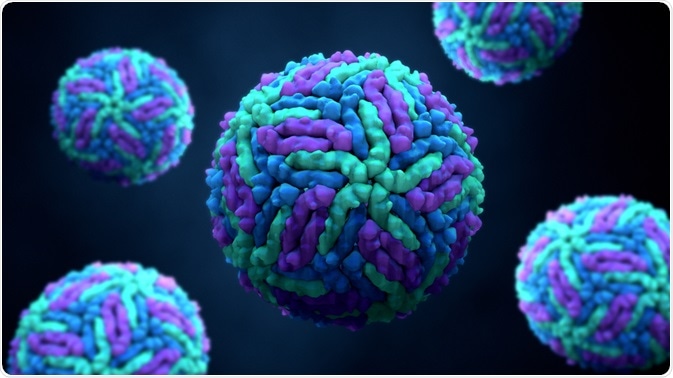Western blotting is a biological technique used to detect specific proteins within a sample. It is important to use housekeeping controls when performing this test so the protein of interest can be compared to a known protein.
 Design_cells | Shutterstock
Design_cells | Shutterstock
Western blotting
In western blotting, the proteins are separated by their length or 3D structure using gel electrophoresis. The proteins are then transferred to a membrane where they are probed using antibodies specific to the target protein.
Preparing the sample
The first step of western blotting is to prepare the sample. To prepare the sample for a gel, the cells or tissues are lysed to release the proteins of interest. The cell or tissues are placed with a detergent which extracts soluble proteins. After a few rounds of centrifugation, the proteins are gained into a supernatant.
SDS-PAGE
The next step involves separating the proteins based on their molecular weight using sodium dodecyl sulfate-polyacrylamide gel electrophoresis (SDS-PAGE). Before performing SDS-PAGE, the protein concentration needs to be measured. The proteins are then denatured using sodium dodecyl sulfate (SDS) which exposes the epitope on the protein of interest. The lanes are loaded with the protein, and the first lane consists of a marker. The electrophoresis unit is filled with buffer and started.
Protein transfer
The next step involves transferring the protein from the gel onto the membrane using ‘wet transfer’. This involves sandwiching the gel and membrane between sponge and paper and then submerging it into a transfer buffer. An electrical field is then applied to force the negatively-charged proteins onto the membrane.
Antibody incubation and detection
First, the membrane needs to be blocked using a blocking solution to prevent background binding. After this, the primary antibody is added that binds to the epitope of the protein of interest. The membrane is incubated for approximately an hour for the primary antibody to bind. The secondary antibody is then added, incubated, and detected to reveal the protein of interest.
Why are controls needed?
Beta-actin and GADPH as controls
The control protein used in western blotting must be present across all cell types or tissue types that are used in the experiment. The expression of the control protein should not change due to the experimental procedure and both the protein of interest and the control protein should be within the range of detection.
The two most commonly used controls are beta-actin and Glyceraldehyde 3-phosphate dehydrogenase (GADPH). Beta-actin is commonly used as a western blot loading control as is expressed within all eukaryotic cell types and is not affected by cellular treatments.
Beta-actin is approximately 42 kDa and GADPH is approximately 36 kDa. They are used as a control as they remain stable in the presence of a wide range of compounds.
Considerations when using protein controls
Recent studies have discovered that housekeeping proteins, such as GADPH and beta-actin, may be altered by the experimental conditions and skew the results. Therefore, any protein that is selected as a normalization control must be validated with respect to the sample type and experimental conditions.
Another study (performed by Rocha-Martins, et al.) showed that many researchers use common housekeeping proteins without validation, which can lead to biased study outcomes.
Further Reading
Last Updated: Jan 14, 2019